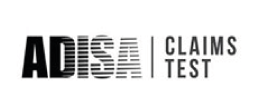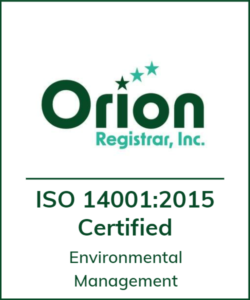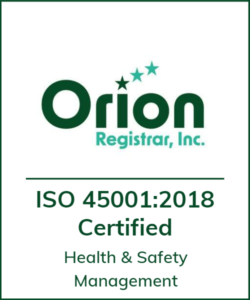A handy resource covering key terms and topics arising in our coverage of data center ITAD, with an emphasis on storage hardware and hard disk drives.
ADISA
ADISA (the Asset Disposal and Information Security Alliance) is an independent certification body focused on data protection standards. Its industry-leading compliance certification for data sanitization supports organizations seeking best-in-class control. In addition to certifying and auditing members to ensure responsible data protection practices, ADISA vets and certifies sanitization software and hardware disposal methods. Methods are assigned to one of three “test levels”, based on the level of threat the technique in question can withstand.
ASSET RECOVERY
Asset recovery is when you reclaim value from used assets, either by reuse, resale, or by extracting valuable components that can be used in new devices. Unfortunately, fully functioning hard disk drives are often destroyed unnecessarily due to data security concerns. Recovering the asset for future use, whether recertified by the OEM or white labeled for remarketing, should be the first consideration wherever possible. Even when used, your hard drives are valuable.
CIRCULAR ECONOMY
The circular economy is a direct challenge to the take-make-dispose linear economy. It aims to address waste in the system and prevent the depletion of finite resources. Hard disk drives are widely viewed as representing an excellent opportunity for developing circularity in production, as they contain valuable metals and magnets which can be used in manufacturing new drives. Since E-waste accounts for 70% of hazardous waste within landfills, the circular economy is an important component of greening ITAD.
DATA BREACHES
A data breach is when someone gains unauthorized access to protected or confidential data. Whether it’s from mismanaged cloud storage permissions, drive theft, or phishing scams, the risk of a security breach is greater now than ever. Organizations must take into consideration security protocols in order to ensure best practice and legal compliance. When retiring storage assets, companies should comprehensively sanitize hardware before reusing or recycling. That said, the majority of data breaches stem from malicious attacks on active systems, not from decommissioned assets.
DATA SANITIZATION
Data sanitization is an umbrella term that covers the various approaches to making the recovery of data from a device infeasible. Methods include overwriting, scrambling data by deleting an encryption key, and, as a last resort, physical destruction. As an organization, you want to ensure malicious actors cannot retrieve data data from a used storage drive prior to remarketing or recycling. Make sure your ITAD vendor can demonstrate a robust process that includes such elements as device tracking, rigorous testing, and audits of outbound devices.
E-STEWARDS
E-stewards is an initiative offering a standard for recycling electronics waste (e-waste). Independently audited by trained auditors, the e-Stewards standard requires that electronics recyclers not only securely wipe data from retiring assets, but that they responsibly oversee the management of toxic e-waste downstream from their facilities. The standard also prohibits the use of child, coerced, or prison labor throughout the recycling supply chain, and discourages the exportation of e-waste to developing countries.
FACTORY RECERTIFIED
Factory recertified drives, also known as manufacturer recertified drives, are drives that have been recertified by the OEM (original equipment manufacturer) as being in good condition. A factory recertified drive will have been inspected and, if needed, repaired according to OEM specifications. It may have undergone testing more rigorous than the equivalent drive coming off the assembly line. Recertified drives usually come with a label indicating that they’ve been officially retested, and offer enhanced reliability at low cost.
HAMR (HEAT-ASSISTED MAGNETIC RECORDING)
Heat-assisted magnetic recording, or HAMR, is a way of increasing the areal density of magnetic storage media, such as hard drive disks. The write head applies short bursts of 450°C heat during the write process, allowing for densely written bits. HAMR has allowed manufacturers such as Seagate to produce 30+TB drives. If the all-important $/TBs can be kept lower than flash, HDD will have a bright future ahead of it.
HARD DISK DRIVES
Hard disk drives (HDDs) are storage devices consisting of spinning platters of magnetic media. A magnetic write head is to flip the polarity of magnetic bits. This polarity, which is “up” or “down” in the case of perpendicular magnetic recording (PMR), is used to represent 0s and 1s. HDD has come a long way since its 1956 introduction by IBM, but growth in areal density began flatlining by the mid-2010s. Thankfully, Seagate, Western Digital, and Toshiba are solving this with new technologies, such as HAMR and MAMR.
HDD Remains Dominant Storage Technology
INEMI
The International Electronics Manufacturing Initiative (iNEMI) is a not-for-profit consortium for research and development. It is composed of leading electronics manufacturers, suppliers, universities, and government agencies. iNEMI aims to map out the future needs of the global electronics industry, and identify those areas that require support. Its Value Recovery from Used Electronics working group is tasked with developing a circular economy for hard drives, including finding ways to extract reusable components. In the words of member Seagate, the objective is to create “hard drives from hard drives” wherever possible.
ITAD
IT asset disposition is the practice by which end-of-use or end-of-life IT hardware is reused or recycled, with data security and environmental sustainability in mind. A growing element within ITAD is IT asset recovery (ITAR), which seeks to maximize the financial return to the IT owner either through refurbishing and recertifying the hardware or by dismantling and harvesting its component parts in the most environmentally and financially beneficial way possible. It helps to plan ahead, so hardware lifecycle management will set your ITAD procedures up for success.
A Guide To IT Asset Disposition: What Is ITAD?
MAMR (MICROWAVE-ASSISTED MAGNETIC RECORDING)
MAMR (microwave-assisted magnetic recording) is a hard drive technology that seeks to improve performance and areal density for HDDs. With MAMR, a spin torque oscillator in the head creates an electromagnetic field to assist with writing. Toshiba has produced drives with a MAMR variant called MAS-MAMR, which enables a lower current in the write head, allowing for more narrowly focused recording locations. MAMR used to be central to Western Digital’s roadmap, but it has since been sidelined in favor of OptiNand, SMR, and HAMR.
NIST 800-88
The U.S. National Institute of Standards and Technology (NIST) guidelines for computer media sanitization, known as NIST 800-88, is a set of guidelines for data sanitization. Revised in 2014, these guidelines are commonly used in the U.S., and occasionally elsewhere. While the standard does not set out clear compliance conditions, it helps clarify terminology. For example, it defines sanitization as “process to render access to target data on the media infeasible for a given level of recovery effort.”
Data Sanitization For Data Center Decommissioning
OPEN COMPUTE PROJECT
The Open Compute Project (OCP) was founded in 2011 as a non-profit organization to assist data center users and developers by helping them share breakthroughs, simplify designs, and deploy advances. Focused on open source and open collaboration, the OCP encourages hardware specifications and know-how that can be added to and modified by any other member. The OCP operates with the foundational philosophy of “grid to gates”, a highly modular approach looking at everything from data center power grids to transistor logic gates within chips and motherboards.
REFRESH CYCLE
A server “refresh”, or hardware replacement, is done when a company wishes to access higher-performing hardware in the data center and retire old or failing equipment. A refresh cycle is just the length between refreshes. Some organizations refresh their IT hardware every five or six years, essentially running their assets for as long as physically possible, while others commit to shorter refresh cycles to secure performance gains through newer hardware. When refreshing equipment, companies need to consider what to do with retired IT assets and what value can be recovered from them.
R2
R2 is an industry-leading certification for responsible recyclers of electronic equipment. It has a well-established presence in North America, and a growing profile internationally. The standard, which is administered by SERI, currently operates in more than 40 countries. R2v3, released in 2020, requires that a company show that it’s opted for reuse wherever possible, and the greenest available method of disposal when reuse isn’t an option. In order to improve transparency, v3 also takes into account off-site and outsourced activity.
Let’s Connect
We will not only recover you value, we will save you the heavy lifting.
info@horizontechnology.com
sales@horizontechnology.com
(949) 595-8244
Let’s Connect
We will not only recover you value. We will save you the heavy lifting.
info@horizontechnology.com
sales@horizontechnology.com
(949) 595-8244












